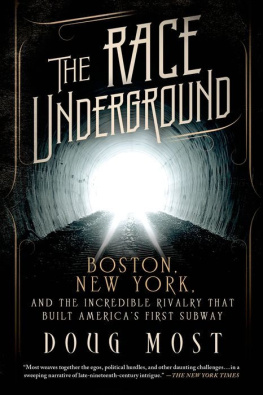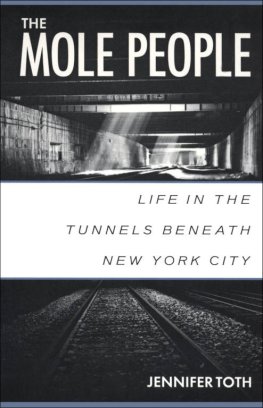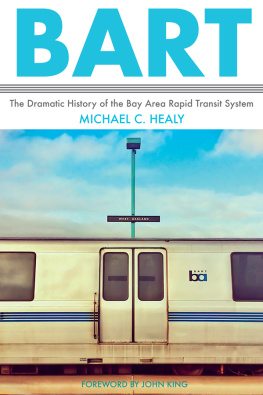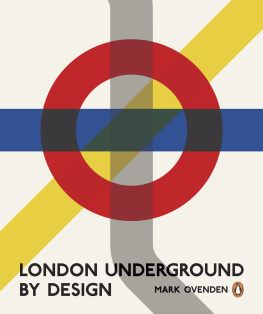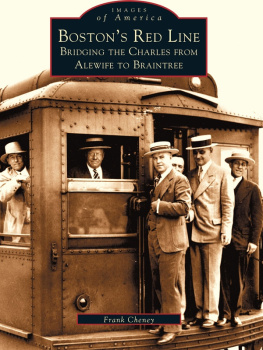Doug Most - The Race Underground: Boston, New York, and the Incredible Rivalry That Built America’s First Subway
Here you can read online Doug Most - The Race Underground: Boston, New York, and the Incredible Rivalry That Built America’s First Subway full text of the book (entire story) in english for free. Download pdf and epub, get meaning, cover and reviews about this ebook. year: 2014, publisher: St. Martin’s Press, genre: Detective and thriller. Description of the work, (preface) as well as reviews are available. Best literature library LitArk.com created for fans of good reading and offers a wide selection of genres:
Romance novel
Science fiction
Adventure
Detective
Science
History
Home and family
Prose
Art
Politics
Computer
Non-fiction
Religion
Business
Children
Humor
Choose a favorite category and find really read worthwhile books. Enjoy immersion in the world of imagination, feel the emotions of the characters or learn something new for yourself, make an fascinating discovery.
- Book:The Race Underground: Boston, New York, and the Incredible Rivalry That Built America’s First Subway
- Author:
- Publisher:St. Martin’s Press
- Genre:
- Year:2014
- Rating:4 / 5
- Favourites:Add to favourites
- Your mark:
- 80
- 1
- 2
- 3
- 4
- 5
The Race Underground: Boston, New York, and the Incredible Rivalry That Built America’s First Subway: summary, description and annotation
We offer to read an annotation, description, summary or preface (depends on what the author of the book "The Race Underground: Boston, New York, and the Incredible Rivalry That Built America’s First Subway" wrote himself). If you haven't found the necessary information about the book — write in the comments, we will try to find it.
Doug Most: author's other books
Who wrote The Race Underground: Boston, New York, and the Incredible Rivalry That Built America’s First Subway? Find out the surname, the name of the author of the book and a list of all author's works by series.
The Race Underground: Boston, New York, and the Incredible Rivalry That Built America’s First Subway — read online for free the complete book (whole text) full work
Below is the text of the book, divided by pages. System saving the place of the last page read, allows you to conveniently read the book "The Race Underground: Boston, New York, and the Incredible Rivalry That Built America’s First Subway" online for free, without having to search again every time where you left off. Put a bookmark, and you can go to the page where you finished reading at any time.
Font size:
Interval:
Bookmark:

The author and publisher have provided this e-book to you for your personal use only. You may not make this e-book publicly available in any way. Copyright infringement is against the law. If you believe the copy of this e-book you are reading infringes on the authors copyright, please notify the publisher at:
us.macmillanusa.com/piracy.
For M IMI , J ULIA, AND B EN
Constructing the tunnel will be simple, just like cellar digging.
JOHN B. MCDONALD, THE FIRST CONTRACTOR HIRED TO BUILD THE NEW YORK CITY SUBWAY, JANUARY 18, 1900
CONTENTS
Part One:
Part Two:
Part Three:
Introduction
TWO CITIES, ONE CRISIS
IN THE SECOND HALF OF the nineteenth century, the horse-pulled streetcar, clip-clopping along at five miles per hour and filled with an unbearable stench, slowly began to cripple two great American cities. In Boston and New York, there were too many people and no safe, fast, reliable way for them to move from one neighborhood to the next. In the summer heat, carriages inched forward until the animals reared up their legs in frustration, and police had to come out swinging their clubs to restore peace. During the winter it was no better. Horses struggled to get their footing in the snow and ice and were driven to exhaustion or sometimes death. When a solution to the problem finally emergeda subwayit was rejected time and again, either by corrupt politicians, selfish businessmen, or terrified citizens. A menace to the health of the public, a man of the times said. A newspaper article went even further, describing a subway ride like living in a tomb.
This is a story about fabulously wealthy Gilded Age industrialists and dirt-poor immigrants during a period when Fifth Avenue mansions and Beacon Hill brownstones stood blocks from sheet-covered shanties and rat-infested tenements. But its also about an age of innovation, an exhilarating time after the Civil War when the telephone, lightbulb, typewriter, cash register, dishwasher, sewing machine, electric motor, and even dynamite were born of a need to make life simpler.
As the pressure mounted on Boston and New York in the final decade of the nineteenth century to reduce the congestion on their streets and expand their livable boundaries, it was an unlikely pair of brothers from a tiny town in central Massachusetts who rose up to help. They were powerful men. Respected, ambitious, and rich, they were willing to bribe whomever they needed and able to buy whatever they wanted. Two years and two hundred miles apart, they would lean on each other, learn from each other, love each other, and, in one particular moment of desperation, they would even share their most important employee, a brilliant young engineer, with each other. But they could not have been more different.
The older brother was a late bloomer who lived near Boston. He was short, stocky, nearly deaf after a childhood bout with scarlet fever, and walked with a stoop. He might have amounted to nothing if not for his fathers help. The younger brother, living in New York City, was the family star. Athletic and lean, he attended Yale and Harvard, married into a fortune, rescued the United States Navy, and was recruited to run for president. Together they came from a long line of Puritans, a family that over four centuries would claim ties to the Revolutionary War, the cotton gin, the color motion picture, a world-famous museum, and even a baseball team called the Mets. Of their familys many achievements, these brothers would notch the most significant one of all. They helped launch the birth of the subway in America and, with it, a new era of rapid urban transit.
This is as much a tale of American ingenuity and the perseverance of man as it is about two powerful siblings and two rival cities. Boston and New York, in their pursuit to move their people faster, safer, and farther, would each experience death and destruction, breakthroughs and breakdowns, thrilling firsts and embarrassing failures, all while keeping a close eye on the others progress. The stories of their two subways would captivate and galvanize their citizens and drag out for decades, straddling the end of one century and the start of another. In one of these cities, the race underground actually started twenty-five years before it did in the other, on a mild fall afternoon not long after the final shot of the Civil War had been fired.
That was the day an odd-looking, churchgoing, opera-loving skinny young inventor looked out onto his citys streets and decided he could no longer tolerate the mayhem.
Part One
THE VISIONARIES
A SECRET SUBWAY
THEY CAME ON FOOT, AND BY CARRIAGE, and from the city and around the country. On September 12, 1867, thousands of people lined up outside the Fourteenth Street armory, a hulking gray building in downtown New York, to see what the future held for them. The women wore hoop skirts and their finest bonnets, the men came in their dark suits and perfectly knotted ties. The American Institute Fair was more than an event. It was a monument to the times, the place to come and see the latest crazy ideas that the inventors of the day had dreamed up and to get a glimpse of the fantastic future. This year one particular innovation, which a reporter for The New York Times had seen during a sneak preview and raved about in an article, was turning the thirty-seventh year of the fair into a spectacle before it even opened.
The American Institute Fair, started in 1829 as a way to encourage innovation in the country, showcased a collection of novelties, some practical, some bizarre. For a number of years the fair had no permanent home, until it grew so big that organizers decided it deserved its own space. A group of financiers, including August Belmont and William Cullen Bryant, two of New Yorks richest men, imagined a warehouse-sized building more grand than Londons glittering Crystal Palace. And on Forty-second Street and Sixth Avenue, in the same place where George Washingtons troops had once been chased across a field by redcoats, thats what they built. Their own Crystal Palace was shaped like a Greek cross and topped by an enormous 123-foot-high dome, the tallest in America. With eighteen hundred tons of iron and fifteen thousand panes of clear enameled glass, there was nothing else like it. When it opened on July 14, 1853, President Franklin Pierce was there to welcome in a new era when dazzling advances in technology and science would define the countrys direction.
One year later at the fair, a clever mechanic named Elisha Graves Otis showed how climbing hundreds of stairs no longer had to be an obstacle for cities to grow upward. His elevator, a new invention that was pulled up by ropes, was not only safe but heralded the age of buildings much taller than eight, ten, or twelve stories. With a crowd standing around his elevator, Otis rode it to its highest level and, for the riveted audience below, reached out and cut the elevators only rope. Instead of plummeting down, he fell only a few inches and then stopped, showing everybody how the safety catch he had installed worked.
A few years after that, in 1856, another promising inventor and entrepreneur brought a typewriter hed been tinkering with to the fair. A short and skinny thirty-year-old man with slicked-back black hair and a razor-thin mustache, Alfred Beach was a devoted churchgoer and opera lover who rose early and went to bed early. When he was awake, he was in perpetual motion, exercising regularly and working with one thing or another. He despised vacations. Any spare time that he had, he spent toying with wires, cables, or any contraption he could get his hands on, always with the hope of understanding how it worked and how it could be improved.
Next pageFont size:
Interval:
Bookmark:
Similar books «The Race Underground: Boston, New York, and the Incredible Rivalry That Built America’s First Subway»
Look at similar books to The Race Underground: Boston, New York, and the Incredible Rivalry That Built America’s First Subway. We have selected literature similar in name and meaning in the hope of providing readers with more options to find new, interesting, not yet read works.
Discussion, reviews of the book The Race Underground: Boston, New York, and the Incredible Rivalry That Built America’s First Subway and just readers' own opinions. Leave your comments, write what you think about the work, its meaning or the main characters. Specify what exactly you liked and what you didn't like, and why you think so.

